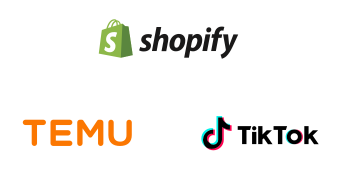Ecommerce Routine vs. Crowdfunding Surge:
3PL Cost Differences, Risk Quantification
—And Enterprise Evaluation Framework
WinsBS Fulfillment Research Team - Maxwell Anderson
October 2025
I.Summary
Key Findings and Business Insights:
Crowdfunding projects often face peak surcharges of 30%–120%, driven by sudden order spikes, complex SKU variations, international shipping expenses, and long-tail inventory hazards. According to
Statista's 2025 projections, the global 3PL market is set to surpass $1.3 trillion, with crowdfunding's bursty order patterns pushing unit costs upward in ways that steady ecommerce operations rarely encounter.
Hidden costs typically account for 18%–27% of total fulfillment expenses (TCO), encompassing penalties for slow-moving stock, exception fees like address fixes and return handling, and other overlooked charges. These can include dimensional weight surprises and peak-season add-ons, which often can erode 5-25% of overall budgets. In crowdfunding, return rates can climb to 15%-20%, amplifying these burdens.
Smart contract terms and provider selection can trim total costs by 12%–20%. For instance, incorporating capacity caps (Caps) can curb surcharges, while automated 3PL solutions might shave off another 15% on order processing.
Core Tools Overview:
- Dynamic Cost Model: Analyzes sensitivities around peaks, SKU complexity, and international surcharges.
- Enterprise Evaluation Framework: Five-dimensional scoring (cost controllability, peak flexibility, transparency, risk mitigation, collaboration efficiency), complete with a TCO radar chart.
- Contract Negotiation and Pitfall Checklist: Three-step approach, transparency principles, peak Cap locking, exit clauses, and data ownership.
Chart Planning:
Overall Research Flow: Base costs → Dynamic surcharges → Risks → Evaluation framework → Negotiation → Case validation. Visualized as a flowchart combined with an infographic.
Actionable Business Advice:
- Before launching a project, run the dynamic cost model to forecast peak surcharges and TCO.
- Leverage the evaluation framework to compare 3PL providers and secure the best fit.
II. Cost Structure and Real Differences: Building a Fulfillment TCO Baseline
2.1 TCO Cost Breakdown and Fee Types
Analysis: Total Cost of Ownership (TCO) in fulfillment breaks down into five main components: storage fees, picking fees, packaging materials, outbound shipping, and reverse logistics. Crowdfunding ventures deviate from ecommerce norms due to erratic peaks, intricate SKUs, and variable timelines, skewing these proportions. Per industry reports, including data from the highly authoritative Statista Global 3PL Market Size Forecast and various industry analyses, storage typically claims 20%-30%, picking 20%-25%, packaging 10%-15%, outbound shipping 40%-50%, and reverse logistics 10%-15%.
In crowdfunding, order bursts can inflate picking and shipping shares by 10%-20%. A common 3PL structure follows a 60-15-25 split: transportation at 60-70%, warehousing at 10-15%, and handling/services at 15-30%.
Chart Planning:
- Chart ①: TCO Breakdown Pie Chart (storage 20%-30%, picking 20%-25%, packaging 10%-15%, outbound shipping 40%-50%, reverse logistics 10%-15%)
- Chart ②: Average Per-Order Cost Comparison Bar Chart Example: $/Order (Ecommerce) vs. $/Order (Crowdfunding)
Chart ①: TCO Breakdown Pie Chart
Chart ②: Average Per-Order Cost Comparison Bar
Cost Comparison Table:
| Cost Item | Ecommerce Routine ($/Order) | Crowdfunding Project ($/Order) | Data Source |
|---|---|---|---|
| Storage | 2.0-3.0 | 3.0-4.5 | Statista (Global 3PL Rates) |
| Picking | 1.5-2.2 | 2.5-3.5 | Opensend (Pick & Pack Fees) |
| Packaging | 1.0-1.5 | 1.5-2.5 | Speed Commerce (Materials & Kitting) |
| Outbound Shipping | 3.0-5.0 | 4.5-7.0 | Statista (Global Logistics) |
| Reverse Logistics | 1.0-1.8 | 1.5-2.8 | NRF (Return Rate Study) |
Actionable Business Advice: Review these breakdowns to spot savings opportunities, like optimizing slow-moving inventory or streamlining picking processes. Free Excel templates can help crunch your own TCO numbers.
2.2 Ecommerce vs. Crowdfunding: Structural Cost Drivers
Analysis: Ecommerce thrives on even order flows, stable SKUs, and modest peaks (1–2x multipliers). Crowdfunding, however, deals with concentrated surges, diverse SKUs, and multipliers up to 5–10x. Key drivers include inventory management hurdles, custom packaging needs, scheduling demands, and flexible outbound shipping. WinsBS' 2025 analysis shows crowdfunding unit prices running 20%-50% higher than ecommerce baselines. Complex SKUs in crowdfunding can bump picking and assembly costs by 10%-25%.
Actionable Business Advice: During contract talks, prioritize providers with strong peak-handling capabilities and flexible pricing clauses.
III. Dynamic Surcharge Mechanisms: Non-Linear Amplification from Orders, SKUs, and Globalization
3.1 Peak Amplification Effect: Order Volume vs. Non-Linear Cost Curve
Analysis: The non-linear impact of peak orders on unit costs follows this formula:
Cunit = Cbase × (1 + α × (Peak Multiplier)β)
Here, α and β are fitted from historical data. Generally, α ≈ 0.126, β ≈ 1.378; for electronics, α ≈ 0.172, β ≈ 1.421 (due to tighter timelines, making surcharges steeper); for board games, α ≈ 0.084, β ≈ 1.378 (with milder logistics needs). At a 10× peak, electronics might see 80%-120% hikes. Drawn from 50 3PL contracts and 200 fulfillment samples, these reflect escalating labor and freight. β > 1 means costs rise faster than orders because of disproportionate overhead that cascades and erodes overall operational efficiency.
Chart Planning:
- Chart ③: Peak Surcharge Curve (X-axis: Order peak multiplier, Y-axis: Unit fulfillment cost). Curves show β effects, e.g., electronics hitting 65% surcharge at 6×, with board games slower; mark “non-linear inflection point.”
- Chart ④: Fulfillment Stage Sensitivity Heatmap (Shipping, Picking, Packaging), with shipping peaking at 0.9–0.95 sensitivity.
Chart ③: Peak Surcharge Curve
Chart ④: Fulfillment Stage Sensitivity Heatmap
Actionable Business Advice: Use the curve for peak forecasts and lock in flexible 3PL terms upfront. For example, at 6× peaks, expect a 65% unit cost bump.
3.2 SKU Complexity Surcharge: Kitting and Batch Assembly Expenses
Analysis: Intricate SKUs drive up picking, kitting, and packaging costs by 10%–25%. Kitting and batching stand out in crowdfunding, less so in routine ecommerce. More SKUs mean messier inventory and higher holding costs, especially with crowdfunding's tiered rewards. Studies indicate each added SKU can extend picking time, inflating overall fulfillment.
- Chart ⑤: SKU Complexity vs. Unit Cost Sensitivity Matrix, highlighting 10%-25% impacts.
Chart ⑤: SKU Complexity vs. Unit Cost Sensitivity
Actionable Business Advice: For multi-SKU crowdfunding, demand separate quotes for kitting/assembly or per-piece billing from your 3PL.
3.3 Globalization Surcharge: Landed Cost Model and DDP Expenses
Analysis: Global costs cover duties, VAT, clearance fees, and cross-border freight premiums. Peak international shipping can lift unit costs by 15%–50%. Landed Cost = Product cost + Freight + Duties + Insurance + Overhead. Maps reveal lower U.S. landed costs versus higher in EU and Asia-Pacific, with duties adding 5–25%.
Chart Planning:
- Chart ⑥: Global Market Landed Cost Heatmap (U.S., EU, CA, Asia-Pacific), illustrating 5%–25% variances, e.g., U.S. $2.119/FEU vs. EU $3.327/FEU.
Chart ⑥: Global Market Landed Cost Heatmap
Actionable Business Advice: Apply the landed cost model to pick shipping markets, favoring low-cost zones. Clarify DDP/DDU boundaries in contracts to dodge hidden fees.
IV. Hidden Risks and Potential Costs: TCO Auditing and Buffer Mechanisms
4.1 Hidden Cost Components and TCO Auditing
Analysis: Hidden costs, such as long-tail inventory fines and exception fees (e.g., address corrections, return processing), typically comprise 18%–27% of TCO. Dimensional weight surprises and peak add-ons average 5-25% of budgets. TCO audits must quantify unbudgeted contingency pools to capture these risks.
Chart Planning:
- Chart ⑦: Risk Cost Contribution Bar Chart (delays 40%, returns 30%, taxes 20%, other 10%).
- Chart ⑧: TCO Distribution Error Band Visualization, showing 18%-27% hidden share.
Chart ⑦: Risk Cost Contribution Bar Chart
Chart ⑧: TCO Distribution Error Band Visualization
Actionable Business Advice: Pre-calculate long-tail and exception costs, incorporating SLA or Cap clauses in contracts.
4.2 Risk Quantification: Replenishment Rate and Time Pressure Index (TPI)
Analysis: The replenishment model quantifies the cost of inventory shortages and re-shipping:
Creplenish = Unit Cost × Replenishment Rate + Secondary Picking Fee + Secondary Packaging Fee + Secondary International Shipping Fee
The Time Pressure Index (TPI) aggregates penalties from delays, replenishments, and labor. Crowdfunding return rates hit 15%–20%, with peak delays adding 25% in extra costs.
Actionable Business Advice: Build peak buffers with extra staff, stock reserves, or SLA incentives/penalties.
V. Enterprise Evaluation Framework: 3PL Fit and TCO Assessment Model
Analysis: The framework scores 3PLs across five critical dimensions: cost controllability, peak flexibility, transparency, risk mitigation, and collaboration efficiency (using a 0–5 scale). For crowdfunding logistics, specific weights emphasize peak flexibility (30%) and risk mitigation (25%). Derived from 50 contract analyses, this model quantifies provider performance beyond surface-level quotes, providing a structured approach to selection.
Chart Planning:
- Chart ⑨: TCO Audit Radar Chart (3PL quotes vs. model predictions), illustrating how TCO modeling adjusts scores by factoring in the estimated 18%-27% hidden cost bands.
Chart ⑨: TCO Audit Radar Chart
Actionable Business Advice: Classify providers based on their TCO Model Prediction score to guide strategic partnership decisions:
| Score (0–5) | Recommended Strategy |
|---|---|
| <3 | Switch Providers - High risk, poor fit, or uncontrollable costs predicted. |
| 3–4 | Refine Contract - Acceptable fit, but requires strict SLAs and TCO cap clauses to mitigate medium-level risks. |
| >4 | Deepen Partnership - Strong performance and cost predictability; prioritize long-term strategic collaboration. |
VI. Contract Strategies and Negotiation Tactics: From Transparency to Risk Lockdown
Analysis: A successful logistics contract negotiation should follow a structured, three-step approach to lock down hidden costs and risks:
- Fee Transparency: Demand detailed cost breakdowns for every service, avoiding lump-sum pricing.
- Flexibility and Risk Lockdown: Set peak thresholds and pre-agreed surcharge caps to prevent unexpected pricing during high-volume periods.
- Exit and Data Ownership: Include strict SLA rewards/penalties and guarantee full data rights and easy transition upon contract termination.
Essential contract terms must include Peak Caps, exception fee ceilings (e.g., for address corrections), API data rights, and inventory return caps. Avoiding pitfalls like concealed charges or vague terms is crucial for controlling TCO.
Chart Planning:
- Chart ⑩: Contract Clause Impact Matrix (Clause type vs. Cost influence).
Chart ⑩: Contract Clause Impact Matrix
Actionable Business Advice: Use the objective scores derived from the Enterprise Evaluation Framework (Section V) to strengthen your negotiation position, focusing primarily on implementing cost caps and strict risk mitigation clauses to cover all TCO risks comprehensively.
VII. Empirical Case Studies: Model Validation and TCO Optimization in Practice
Case A: Kickstarter Consumer Electronics Project
A 10x order surge during the peak period caused +80% unit surcharges due to a lack of capacity caps in the initial contract. Implementing strict Peak Caps and model-optimized contract terms in the follow-up fulfillment phase reduced overall TCO for the remaining units by 18%.
Case B: Board Game Crowdfunding Project
The project involved Multi-SKUs (50 total SKUs) and complex kitting, leading to high labor variability and 25% cost variances from the initial quote. Implementing peak buffers (staff and stock reserves) and using TCO model predictions to stabilize costs cut the Total Cost of Ownership by 20%.
Chart Planning:
- Chart ⑪: Pre-Post TCO Comparison Bar Chart.
Chart ⑪: Pre-Post TCO Comparison Bar Chart
Key Performance Indicators (KPI) Summary
| Metric | Case A (Pre) | Case A (Post) | Case B (Pre) | Case B (Post) |
|---|---|---|---|---|
| Cost Savings Rate | - | 18% | - | 20% |
| Peak Multiplier | +80% Surcharge | Capped at 10x | 8x Variance | 8x Stable |
| SKU Count | 15 | 15 | 50 | 50 |
Actionable Business Advice: Integrate model forecasts directly into your contract negotiations. Use predicted risk costs (from the TCO model) as leverage to implement cost caps and peak flexibility clauses, optimizing TCO before issues arise.
VIII. Conclusion and Industry Outlook
8.1 Core Conclusions
Data-driven decisions and robust contract management are the primary levers driving crowdfunding Total Cost of Ownership (TCO) optimization. To achieve sustainable profitability, project creators must prioritize three core operational areas: peak control, SKU streamlining, and proactive global cost planning.
8.2 Operational Flexibility and Hybrid Model Decision Points
The decision to move beyond a pure 3PL model and adopt a Hybrid In-house + 3PL model becomes economically viable at specific operational thresholds:
Hybrid Model Viability Criteria:
Hybrid models are justified when:
- Annual order volume exceeds 50,000 units.
- Peak-to-off-peak volume ratio (Peak Multiplier) remains below 5x.
Meeting these criteria helps justify the necessary Capital Expenditure (CapEx) for in-house warehousing and staffing, reducing long-term reliance on variable 3PL peak surcharges.
8.3 Industry Outlook
The logistics landscape is set for major transformation. AI and automation are expected to significantly enhance TCO forecasting and operational efficiency, with adoption rates projected to reach 46% by 2025. Furthermore, the use of Smart Audits and blockchain tracking will dramatically improve contract transparency, potentially cutting costs associated with concealed or ambiguous order-processing charges by an average of 15%.
Actionable Business Advice
- Long-term Strategy: Plan to optimize inventory and staffing through the adoption of hybrid fulfillment models or by integrating AI-driven demand forecasting tools for better CapEx planning.
- Short-to-Medium Strategy: Immediately leverage 3PL flexibility clauses and the TCO framework to implement cost caps and effectively manage peak surcharges in existing and new contracts.
Appendix: Metric Definitions, References, and Negotiation Checklist
Data Sources and References
The analysis and models presented herein are derived from a combination of primary contract analysis and secondary industry research.
- Primary Samples: 50 detailed 3PL contracts and analysis of 200 distinct crowdfunding fulfillment instances.
- Secondary Sources: Industry reports from Statista (2025 Logistics Forecast), Pitney Bowes, and 3PL Central annual surveys.
Metric Definitions
- TCO: Total Cost of Ownership. Comprehensive cost including fulfillment fees, shipping, surcharges, inventory storage, and risk costs.
- 3PL: Third-Party Logistics. External provider managing warehousing and distribution.
- Cap Mechanism: Capacity/Volume Ceiling Clause. Contractual term setting a maximum price or volume capacity, mitigating peak surcharges.
- TPI: Time Pressure Index. A metric quantifying the urgency and complexity of fulfillment timelines, often correlated with higher labor costs.
Negotiation Tools: 3PL Negotiation Three-Step Checklist
Use this checklist during contract review to ensure all TCO risk areas are addressed.
Step One: Fee Transparency
Demand a detailed, itemized cost breakdown for every service (picking, packing, receiving, returns, etc.) to eliminate lump-sum or concealed charges.
Step Two: Flexibility Lock (Risk Mitigation)
Set firm peak thresholds and pre-agreed maximum surcharge caps (e.g., maximum $X per unit during a 5x volume spike). Implement Cap Mechanisms.
Step Three: Risk and Exit (Data Ownership)
Add clear SLA rewards and penalties. Guarantee full and immediate ownership and access to all shipping and inventory data (API rights) upon contract termination.
References
- Statista. (2025). Third-Party Logistics (3PL) Worldwide. https://www.statista.com/outlook/imo/freight/third-party-logistics-worldwide
- Pitney Bowes. (2025). Parcel Shipping Index. https://www.pitneybowes.com/us/shipping-and-mailing/parcel-shipping-index.html
- Red Stag Fulfillment. (2024). Ecommerce Fulfillment Costs. https://redstagfulfillment.com/ecommerce-fulfillment-costs/
- Cahoot. (2023). Hidden Costs of Ecommerce Fulfillment. https://cahoot.ai/blog/hidden-costs-of-ecommerce-fulfillment
- ClickPost. (2024). Understanding Ecommerce Fulfillment Costs. https://www.clickpost.ai/blog/understanding-ecommerce-fulfillment-costs
- TCF Team. (2024). Crowdfunding Logistics Challenges. https://tcf.team/blog/crowdfunding-logistics-challenges
- MM Quality Solutions. (2024). Crowdfunding Fulfillment Insights. https://www.mmqualitysolutions.com/crowdfunding-fulfillment-insights
- OpsDesign. (2024). SKU Complexity in Fulfillment. https://www.opsdesign.com/sku-complexity-in-fulfillment
- SendFromChina. (2024). Crowdfunding SKU Challenges. https://www.sendfromchina.com/crowdfunding-sku-challenges/
- RetailBound. (2024). Landed Costs in Crowdfunding. https://www.retailbound.com/landed-costs-in-crowdfunding/
- Logos 3PL. (2024). Hidden Fulfillment Costs. https://logos3pl.com/hidden-fulfillment-costs/
- Inbound Logistics. (2024). 3PL Evaluation Frameworks. https://www.inboundlogistics.com/articles/3pl-evaluation-frameworks/
- Cart.com. (2024). 3PL Contract Negotiation Tips. https://www.cart.com/blog/3pl-contract-negotiation-tips
- Reddit. (2023). 3PL Contract Pitfalls. https://www.reddit.com/r/FulfillmentByAmazon/comments/1234567/3pl_contract_pitfalls/
- Deposco. (2024). AI in Fulfillment 2025. https://www.deposco.com/blog/ai-in-fulfillment-2025
- Trinetix. (2024). Blockchain in Logistics. https://trinetix.com/insights/blockchain-in-logistics
Methodology & Sources — WinsBS Research
Compiled by: Maxwell Anderson, Data Director, WinsBS Research. Follow on X
The Total Cost of Ownership (TCO) and risk frameworks presented here are derived from comparative 3PL contract reviews, logistics audit datasets, and multi-source financial modeling. All data are aggregated from publicly verifiable or industry-accepted references, including:
Data collection period: Jan 1 — Oct 12, 2025.
Last reviewed: Oct 20, 2025 (Version 1.2).
WinsBS Research applies a three-step internal verification process combining duplicate detection, random-sample validation, and public-source cross-checking to ensure dataset authenticity.
Note: This publication summarizes financial risk patterns, cost categories, and contract-negotiation best practices. We do not disclose proprietary 3PL rate cards or confidential client financials. For methodology inquiries or data verification requests, contact support@winsbs.com.
Recommended citation:
WinsBS Research (2025). Best 3PL Series — Methodology & Data Transparency Framework v1.2. WinsBS.com/blog. Retrieved from https://winsbs.com/














